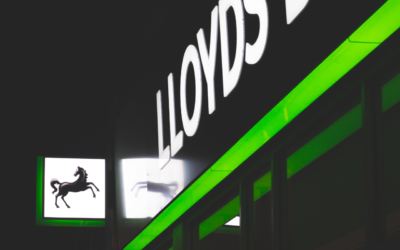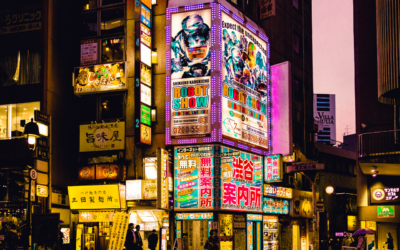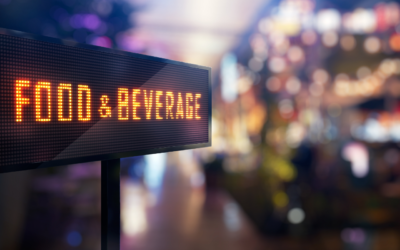A well-designed business sign is one of the most powerful marketing tools for any company. Whether it is an outdoor storefront sign, a vehicle wrap, or an indoor promotional display, signage plays a crucial role in brand recognition, customer attraction, and business growth. In a competitive marketplace, an effective business sign must be eye-catching, easy to read, and strategically designed to make a lasting impression.
For businesses looking to create an impactful presence, understanding key design principles can make all the difference. This guide explores the essential elements of business sign design, provides expert tips for maximum impact, and answers frequently asked questions to help businesses make the best signage decisions.
Key Takeaways
- Visibility and readability are the most important aspects of an effective business sign.
- Brand consistency ensures that the sign aligns with a company’s logo, colors, and messaging.
- Strategic placement helps maximize exposure and attract the right audience.
- Material selection influences durability and overall aesthetic appeal.
- Professional design services can enhance the effectiveness of business signage.
The Importance of an Effective Business Sign
A business sign serves as a silent salesperson, working 24/7 to attract customers, convey messages, and reinforce brand identity. According to studies, nearly 76% of consumers have entered a store they had never visited before based solely on its signage. Additionally, 68% of customers believe a business’s signage reflects the quality of its products or services. Given these statistics, investing in high-quality signage can lead to increased foot traffic and sales.
The Role of Signage in Brand Recognition
Branding is more than just a logo—it’s about consistency and making a lasting impression. A well-designed business sign should include the company’s colors, typography, and logo to create a cohesive brand identity. Whether on a storefront, trade show display, or vehicle wrap, the goal is to make the business instantly recognizable to potential customers.
Tips for Designing an Effective Business Sign
1. Prioritize Readability and Visibility
A business sign is ineffective if potential customers cannot read it quickly. To enhance visibility:
- Use large, bold fonts that can be read from a distance.
- Limit the text to essential information such as business name, tagline, and contact details.
- Ensure high contrast between text and background colors to improve readability.
- Avoid clutter by focusing on one key message per sign.
The placement of the sign also plays a role in visibility. It should be positioned at eye level or higher, free from obstructions like trees or other signage.
2. Choose the Right Colors
Color psychology plays a significant role in business signage. The right color choices can attract attention, convey emotions, and reinforce brand identity.
- Red stimulates urgency and is often used in sales promotions.
- Blue conveys trust and professionalism, making it popular among financial and healthcare businesses.
- Yellow grabs attention and is associated with optimism and energy.
- Green symbolizes growth, making it ideal for eco-friendly brands.
Businesses should use colors that align with their branding while ensuring sufficient contrast for readability.
3. Keep It Simple and Impactful
An effective sign should deliver a message in five seconds or less. Cluttered signs with excessive text, graphics, or complex designs can confuse viewers. Instead:
- Use short, impactful wording that communicates the main idea.
- Stick to one or two font styles to maintain professionalism.
- Incorporate high-quality images or logos without overwhelming the text.
4. Select High-Quality Materials
The durability and appearance of a business sign depend on the materials used. Popular signage materials include:
- Acrylic: A sleek, modern option often used for indoor signs.
- Aluminum: A durable, weather-resistant choice for outdoor signage.
- Vinyl: Versatile and cost-effective for banners and vehicle wraps.
- LED: Ideal for illuminated signs that offer 24/7 visibility.
Choosing the right material ensures longevity and enhances the overall look of the signage.
5. Consider Lighting for Better Visibility
Illuminated signs make a business stand out, especially at night or in dimly lit areas. Common lighting options include:
- Backlit signs that enhance visibility in dark environments.
- LED displays that allow for customizable messaging.
- Neon lights for a retro, eye-catching effect.
Lighting should be strategically placed to avoid glare and enhance readability.
6. Optimize Signage for Location and Placement
The effectiveness of a sign depends not only on its design but also on its placement.
- Outdoor signs should be placed where they receive maximum traffic exposure.
- Window displays should be positioned to catch the attention of passersby.
- Vehicle wraps should include clear branding visible from different angles.
Proper placement ensures the sign reaches the right audience and maximizes its impact.
7. Invest in Professional Design
While DIY sign design tools exist, professional designers bring expertise in layout, color psychology, and branding. A professionally designed sign:
- Ensures brand consistency.
- Maximizes readability.
- Uses high-quality materials for durability.
Businesses that work with signage experts gain a competitive edge in visual marketing.
Frequently Asked Questions
1. How big should my business sign be?
The size of the sign depends on its purpose and location. Outdoor signs should be large enough to be read from a distance, while indoor signs can be smaller but still legible. A general rule is that letters should be at least 1 inch tall for every 10 feet of viewing distance.
2. What are the best fonts for business signage?
Sans-serif fonts like Arial, Helvetica, and Futura are commonly used because they are clean and easy to read. Script and decorative fonts should be used sparingly to maintain readability.
3. How often should business signage be updated?
A business sign should be updated if it becomes faded, outdated, or no longer aligns with the company’s branding. Digital and LED signs allow for more frequent content updates.
4. What is the most cost-effective signage option?
Vinyl banners and aluminum signs are budget-friendly options for businesses. However, investing in high-quality materials can lead to long-term savings by reducing the need for replacements.
5. Can signage improve customer engagement?
Yes. Well-designed signage attracts attention, reinforces brand messaging, and encourages customer interaction. Signs with clear calls to action, such as “Visit Us Today” or “Call for a Free Consultation,” can drive engagement.
Partner with Attention Getters for High-Impact Business Signage
An effective business sign is a crucial investment for any company looking to boost visibility and attract more customers. By prioritizing readability, choosing the right colors and materials, and strategically placing signage, businesses can maximize their marketing impact.
For companies seeking high-quality, professionally designed business signs, Attention Getters offers expert signage solutions that enhance brand recognition and customer engagement. Contact Attention Getters today to create signage that stands out and drives results.




